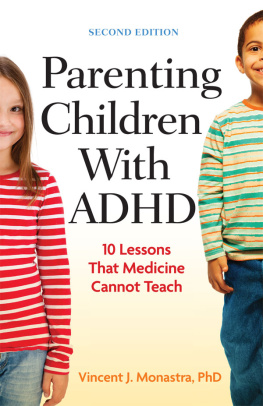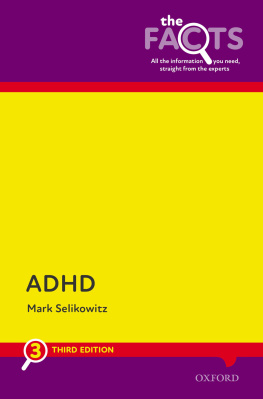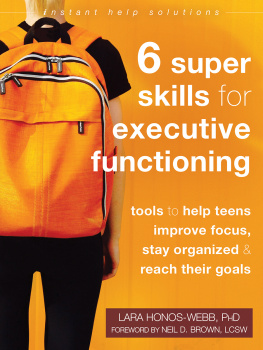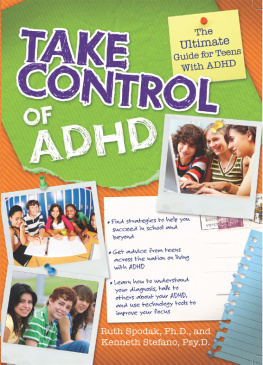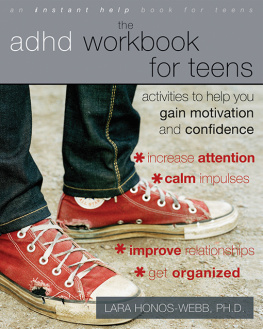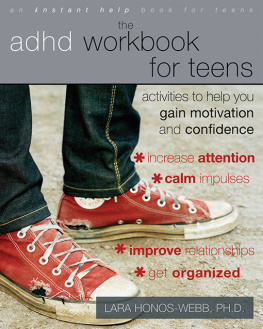Copyright 2016 by the American Psychological Association. All rights reserved. Except as permitted under the United States Copyright Act of 1976, no part of this publication may be reproduced or distributed in any form or by any means, including, but not limited to, the process of scanning and digitization, or stored in a database or retrieval system, without the prior written permission of the publisher.
Electronic edition published 2016.
ISBN: 978-1-4338-2100-4 (electronic edition).
Published by APA LifeTools 750 First Street, NE Washington, DC 20002 www.apa.org | To order APA Order Department P.O. Box 92984 Washington, DC 20090-2984 Tel: (800) 374-2721; Direct: (202) 336-5510 Fax: (202) 336-5502; TDD/TTY: (202) 336-6123 Online: www.apa.org/pubs/books E-mail: |
In the U.K., Europe, Africa, and the Middle East, copies may be ordered from
American Psychological Association
3 Henrietta Street
Covent Garden, London
WC2E 8LU England
Cover Designer: Berg Design, Albany, NY
The opinions and statements published are the responsibility of the authors, and such opinions and statements do not necessarily represent the policies of the American Psychological Association.
Library of Congress Cataloging-in-Publication Data
Monastra, Vincent J.
Teaching life skills to children and teens with ADHD : a guide for parents and counselors / Vincent J. Monastra, PhD. First edition.
pages cm
Includes bibliographical references.
ISBN 978-1-4338-2099-1 ISBN 1-4338-2099-41.Attention-deficit hyperactivity disorder.2.Attention-deficit disorder in adolescence.3.Life skillsStudy and teaching.I. Title.
RJ506.H9M653 2016
618.92'8589dc23
2015019978
British Library Cataloguing-in-Publication Data
A CIP record is available from the British Library.
First Edition
http://dx.doi.org/10.1037/14798-000
To God, from Whom all wisdom comes.
CONTENTS
INTRODUCTION
Ill never forget the moment when I first became a dad. The feeling of sheer terror that my son would not survive childbirth was quickly replaced with the amazement of being part of creating a new life. The next couple of days at home for me were just a blur of final preparations. Then came the real moment of departure: bringing my son home from the hospital. Three-day-old Reuben was all cuddled in, not a care in the world, and about 5 minutes into the ride home with me and his mother, reality hit me. No more nurses showing me how to feed him. No one who could translate baby cries into Im hungry, I need a burp, Im cold, I need a hug, Im tired, or Im wet and poopy. I thought, What in the world do I do with this little guy?
Of course, instinct kicked in, and I eventually learned how to give my little guy what he needed. Even though those first few weeks and months are exhausting, most babies handle entry into the world just fine, and so do we. Were reassured when they seem comfortable and content and figure out pretty quickly what they need when they start to fuss. We take a bazillion pictures to document every moment in their physical development and settle into our various versions of family life.
Time goes by, and before we know it, our babies are heading off to nursery school or preschool. All of a sudden, their little prince and princess habits need to be toned down a bit. Those temper tantrums they throw at home to get their way start to show up at school. Their tendencies to ignore Mom and Dads directions dont disappear when they show up at Future Leaders of America Nursery School. Their inability to share becomes a focus for concern. That high energy that they used to be able to wear out on their little trikes bubbles out all over the rug at circle time.
Even more bewildering is the total change of rules when they transition from preschool to kindergarten. During their preschool years, they were encouraged for talking and playing with other little kids. Then they head into kindergarten, and its no longer OK to do that in the classroom. Being a helper in my two youngest sons kindergarten class was a real eye-opener. At times I could feel frustration mounting and the tension in the air as I watched little boys and girls get corrected whenever their eyes were not on their own work, when they were talking with others, when they were touching anything but what was in front of them, and when they got out of their seat to visit with a buddy in their class. All of this was OK in preschool. Who changed the rules?!
For most kids, these are just momentary glitches. Parents and teachers are able to teach and encourage preschoolers and kindergarten students how to act in social situations. Most will learn within a few months how to handle this new world. They learn to pay attention when the teacher talks and follow directions in the classroom. They can focus on their work for the 10 or 15 minutes required and get most of it done. They learn how to make friends, figure out how to share, and handle those moments when they feel frustrated without saying mean things, biting, or hitting other kids. They experience small measures of success and newfound friendshipslife is pretty good.
However, some children dont learn these lessons so easily. No matter how many times a parent or teacher says, Look at me when Im speaking, the child continues to look everywhere else. No matter how many times a parent or teacher tells a child to sit still, stay in line, use inside voices, or share, change just doesnt come. No matter how many times they tell a child to stop grabbing and pushing, they still find themselves pulling the child off of other kids. These children dont seem to understand words such as boundaries and personal space and are constantly being corrected for being hyperactive and impulsive.
For other children and teens, the issue isnt about being restless, impulsive, or overly active. Instead, the problem for these children is that they dont pay attention very well unless they are involved in doing something they like. These are the kids who cant remember to bring home their assignments but can remind you that you promised to take them shopping a week ago (and give you the exact time, exact place, and your exact words). These are the kids who give up on practicing their spelling words or math problems in 30 seconds but could play Minecraft, build with LEGO bricks, watch TV, ride their bikes, or skate for hours. These are the kids who couldnt follow through on a simple instruction such as Please put away your dishes but could give you detailed instructions about how to succeed on a video game or operate your smartphone, tablet, or other electronic device. About 5% of our children have a degree of inattention, impulsivity, or restlessness at home or school (or both) that doesnt ever seem to get much better because they have something called attention-deficit/hyperactivity disorder (ADHD).
DOES YOUR CHILD HAVE ADHD?
If you are uncertain if your child has ADHD, take a couple of minutes to complete this checklist that provides the core symptoms of ADHD. For a child or a teenager to have ADHD, they need to show at least six symptoms of inattention, and/or hyperactivity and impulsivity, for at least 6 months. Here are the symptoms of ADHD as listed in the diagnostic manual used by physicians, psychologists, social workers, and other mental health counselors (


